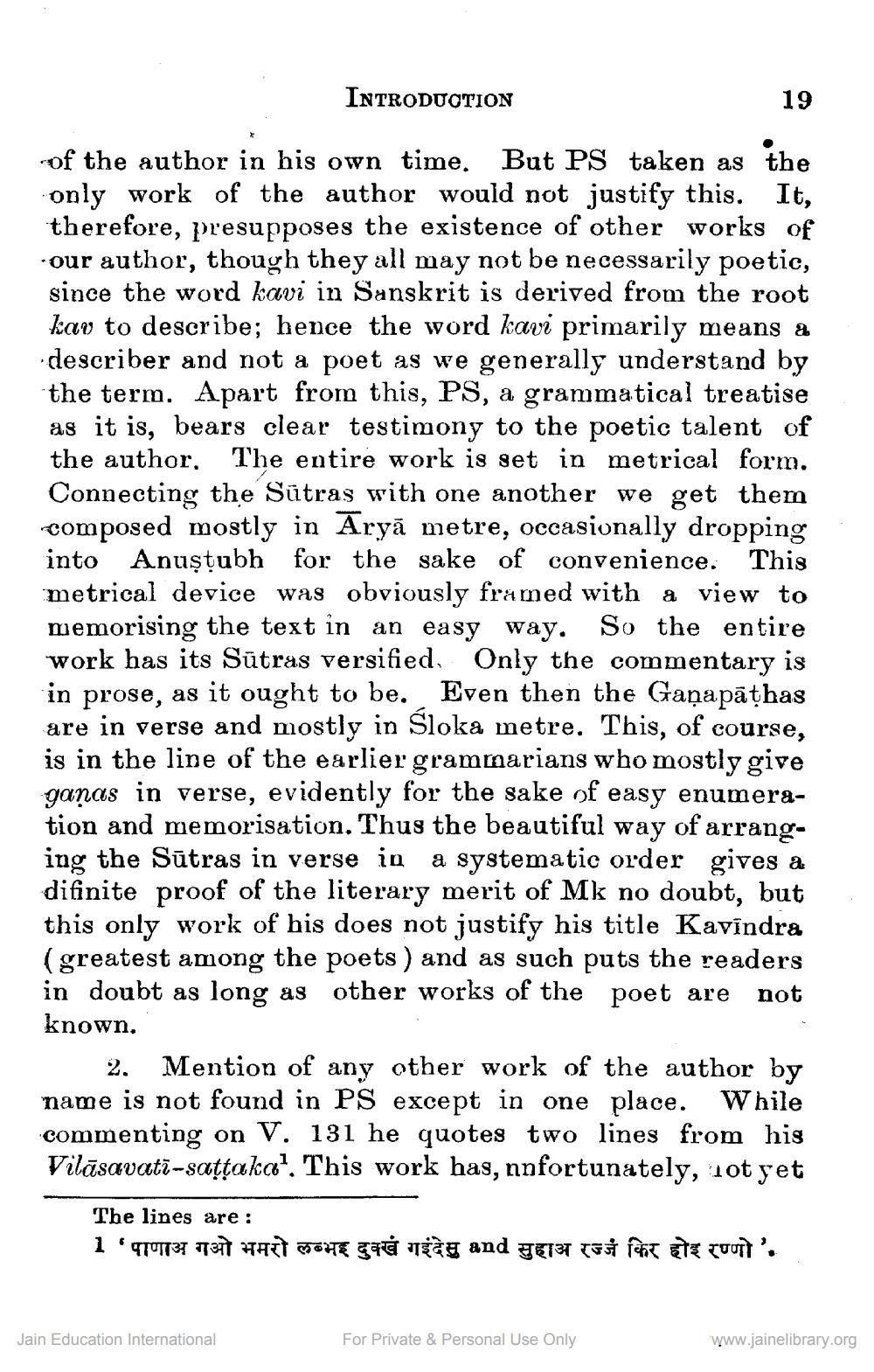________________
INTRODUCTION
of the author in his own time. But PS taken as the only work of the author would not justify this. It, therefore, presupposes the existence of other works of our author, though they all may not be necessarily poetic, since the word kavi in Sanskrit is derived from the root kav to describe; hence the word kavi primarily means a describer and not a poet as we generally understand by the term. Apart from this, PS, a grammatical treatise as it is, bears clear testimony to the poetic talent of the author. The entire work is set in metrical form. Connecting the Sutras with one another we get them composed mostly in Arya metre, occasionally dropping into Anustubh for the sake of convenience. This metrical device was obviously framed with a view to memorising the text in an easy way. So the entire work has its Sūtras versified. Only the commentary is in prose, as it ought to be. Even then the Ganapathas are in verse and mostly in Śloka metre. This, of course, is in the line of the earlier grammarians who mostly give ganas in verse, evidently for the sake of easy enumeration and memorisation. Thus the beautiful way of arranging the Sutras in verse in a systematic order gives a difinite proof of the literary merit of Mk no doubt, but this only work of his does not justify his title Kavindra (greatest among the poets) and as such puts the readers in doubt as long as other works of the poet are not known.
2. Mention of any other work of the author by name is not found in PS except in one place. While commenting on V. 131 he quotes two lines from his Vilāsavati-saṭṭaka1. This work has, nnfortunately, not yet
The lines are:
1 ' पाणाअ गओ भमरो लब्भइ दुक्खं गईदेसु and सुहाअ रज्जं किर होइ रण्णो '.
Jain Education International
19
For Private & Personal Use Only
www.jainelibrary.org




